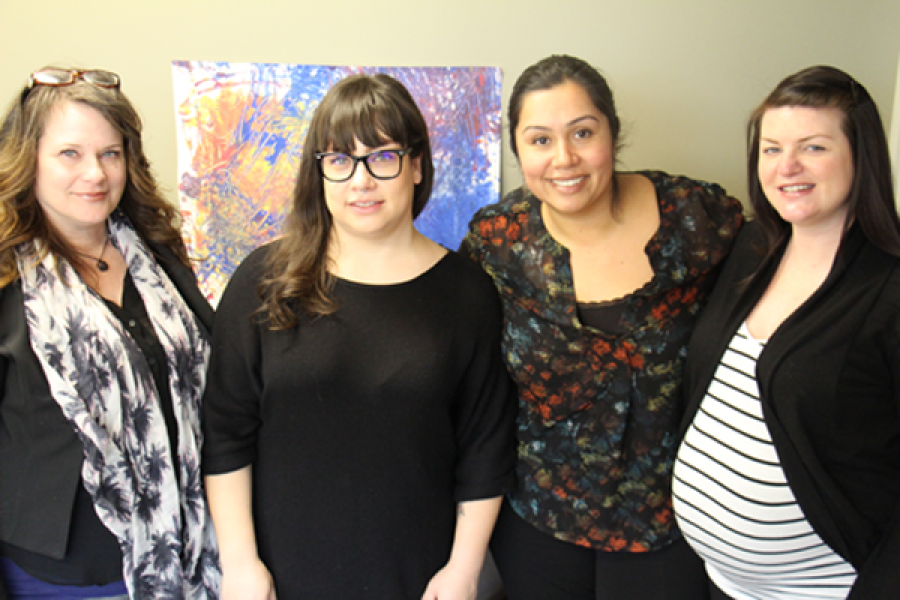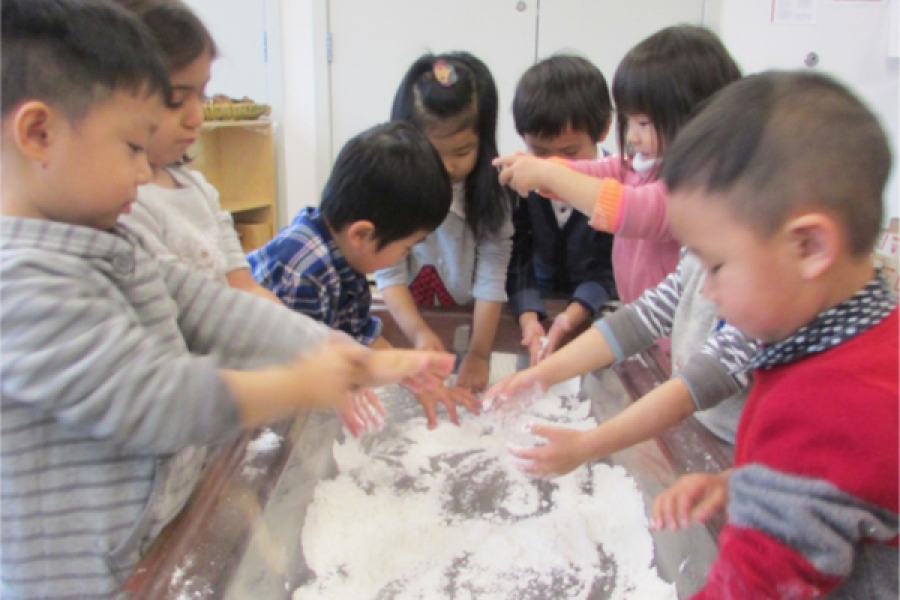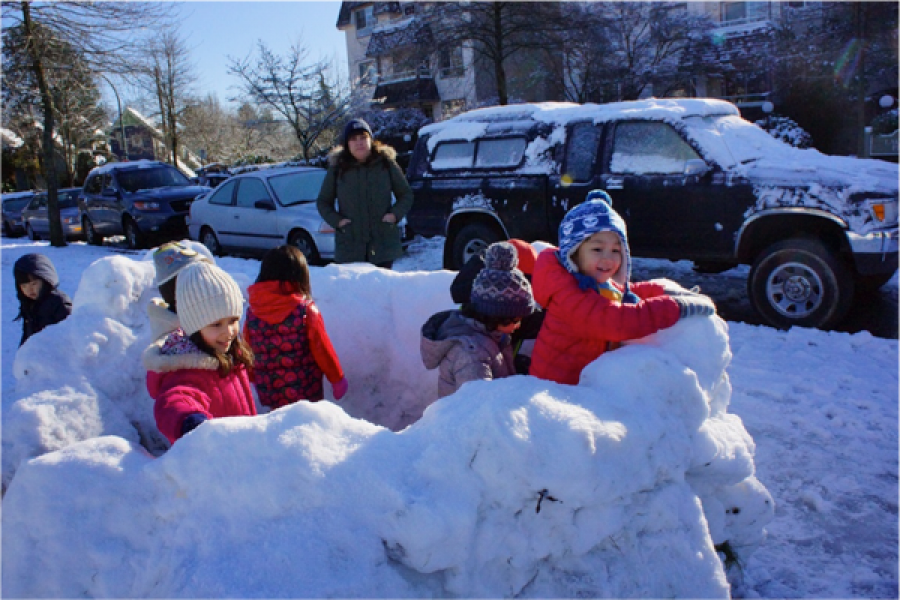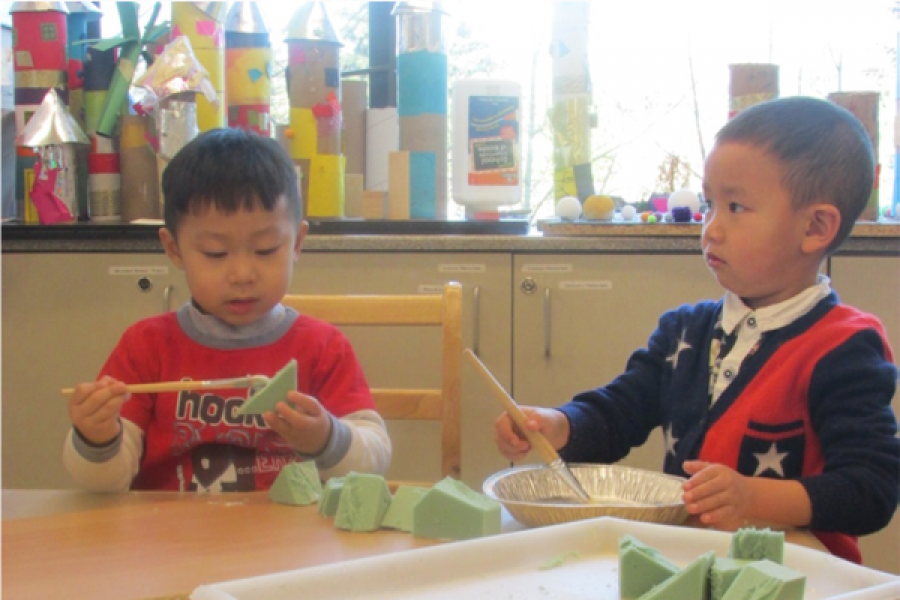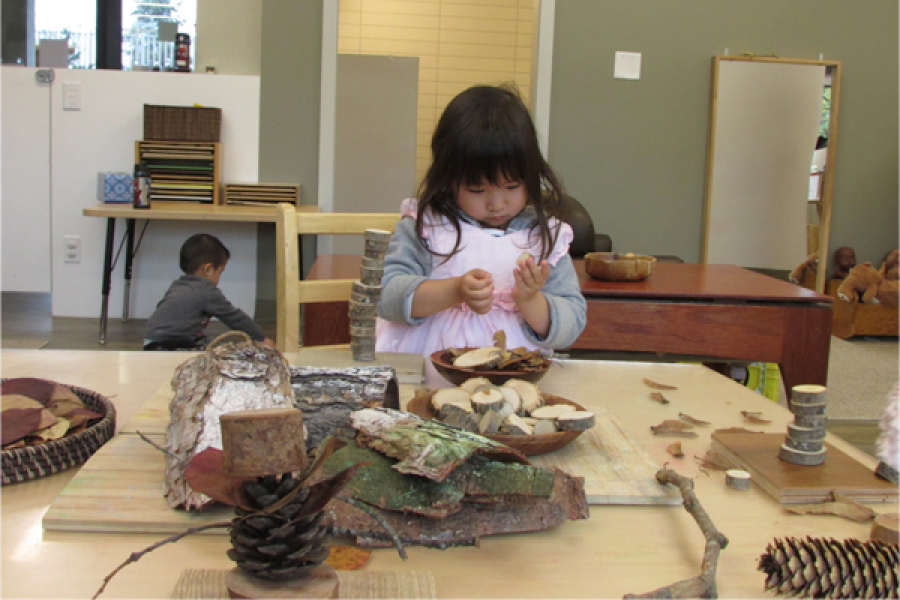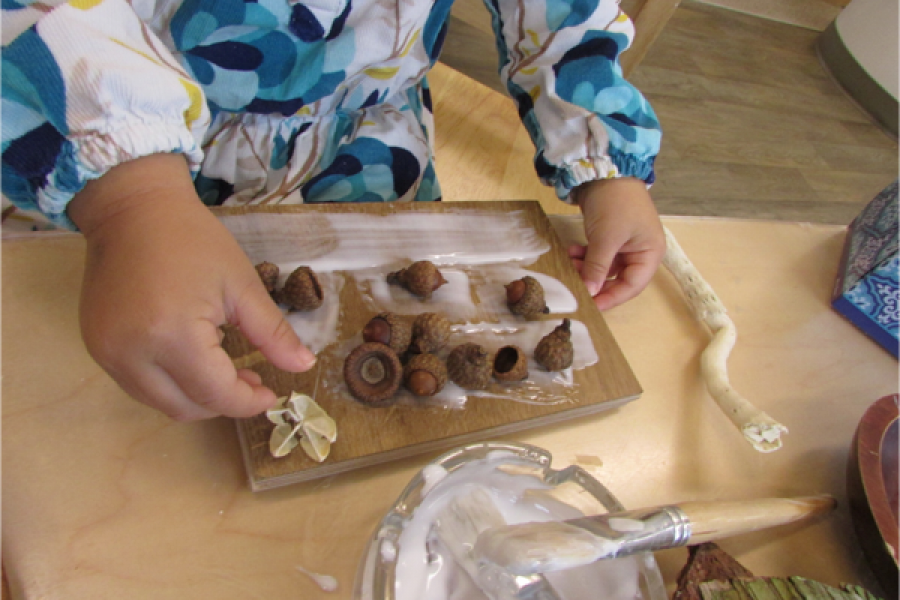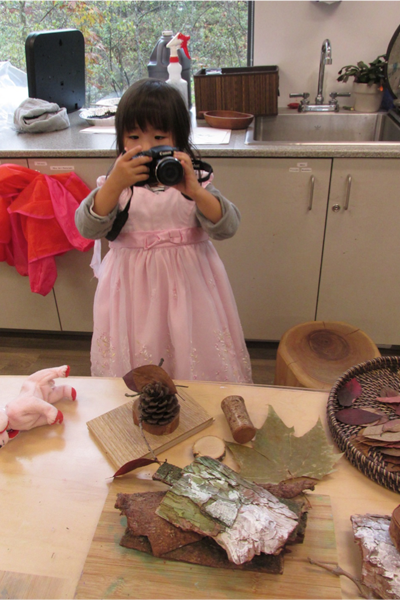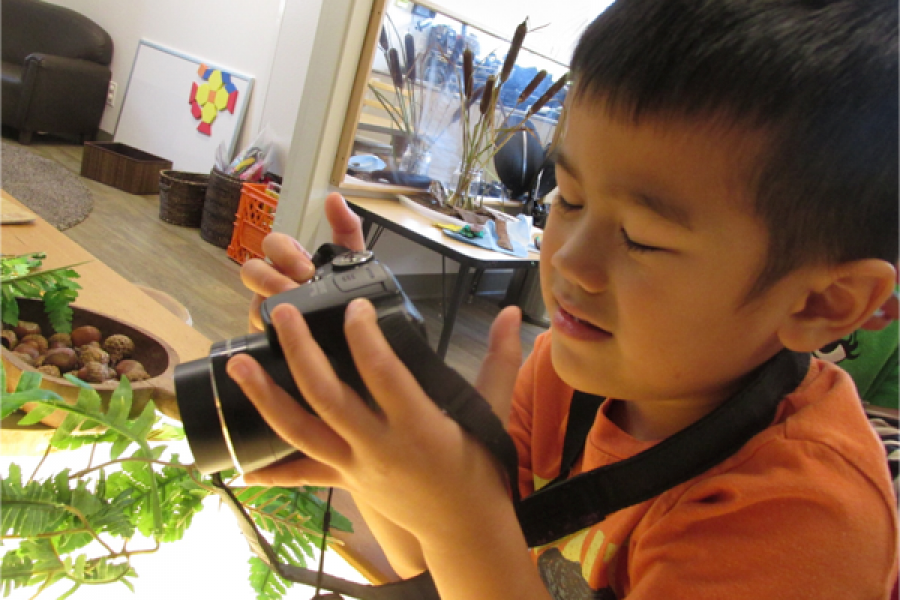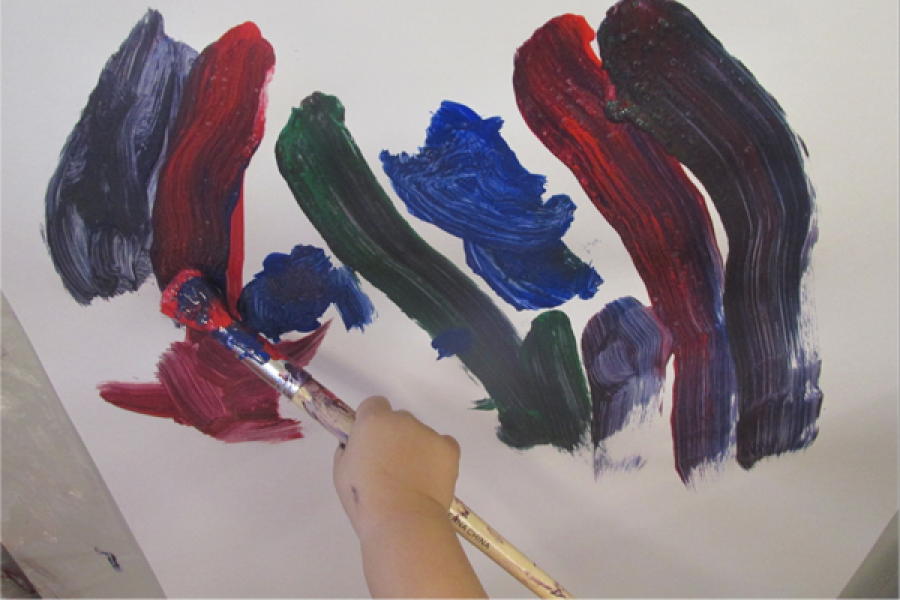The ISSofBC Story: Building a Reggio-inspired Program for Newcomer Children
Inspiration and knowledge can come from anywhere. This is especially true at Immigrant Services Society of BC (ISSofBC), where each child is encouraged to follow their curiosities and construct their own learning through an approach to child care influenced by The Reggio Emilia Philosophy.
Reggio is an educational philosophy that originated in Italy. Through Reggio, educators facilitate activities and guide a child’s interests by offering authentic, open-ended play experiences that reflect the children’s interests and that scaffold their learning. More than that, they give children the tools to express themselves, helping them to strengthen communications skills, and build relationships and confidence. They encourage children to think for themselves, to research their wonderings and questions, and to make theories. The approach also places a strong emphasis on documentation as a way of helping to ensure that the learning remains relevant to each child. With the documentation displayed, this learning is visible to the parents and to those who visit our program.
Using it as a model for their child care for newcomers has proven to be very rewarding for the ISSofBC program. “The Reggio approach is about letting children take the lead,” explains Ana Delgado, Preschool Manager. “A lot of newcomer children are coming from situations where they have had no choice. It wasn’t their choice to move or even to be in the program. It is usually the parent’s choice for a better life. But when they are in the program, to give them so much power over their time and what and how they want to do things really builds their self-esteem, their confidence, and strong relationships with their teachers, the environment and their peers.”
WHAT DOES A REGGIO-INSPIRED PROGRAM LOOK LIKE?
While Ana acknowledges that there is no way to fully duplicate Reggio outside of Italy given the different cultural, social, economic climate of in Canada, there are areas to concentrate on when creating a Reggio-inspired program. These include: the environment, the role of the teacher and the use of documentation.
The Environment
How you set up and use the environment is key to this model. The goal at ISSof BC is to set up a program that is aesthetically beautiful and welcoming–and to integrate the interests of the children.
Says Helen Hart, an ECE at ISSofBC, “Children have their own thoughts and ideas. It is our job to provide them with the environment and materials to do that.”
Some key features of the environment include:
- materials that allow for open-ended play;
- space for children to build, knock things down, create things and come back to them the next day or even the next week;
- open rooms with no area off limits;
- different areas that change depending on children’s interests (i.e., light table, block area, library, quiet room, water table, dress up area, three smaller tables for table-top activities), including sometimes leaving a table empty to see what the children will request;
- natural materials that are multi-purpose and can be incorporated into different parts of room (the program always has items like wood, acorns, leaves sticks, rocks and natural beads on hand);
- primarily wooden toys (the program does have some Lego, dolls , painting tools and bottles—but very, very little plastic);
- having the room and materials set up and ready for the children’s ideas; and
- enough time to allow a child to engage in an activity with limited transitions.
The Role of the Teacher
Unlike some models where the teacher is at the center of the experience, in a Reggio-inspired model the teachers are co-constructors of learning. The children are not given answers and directed how to think. Instead, the teachers are co-learners and researchers alongside the children.
“Teachers are there to work with the children; to provide the materials, to extend their learning through questions and the scaffolding—and of course, for supervision and safety,” explains Ana.
First and foremost, the caregivers are collaborators who learn from each other. “At first, I felt like a fish out of water when I started here, having come from a theme-based program. But, we have such a good team and can talk through things together. It has helped me grow in how I approach each day and how I am as an ECE,” explains Megan Davidson, an ECE at ISSofBC.
Staff at ISSofBC:
- work as a team.
- are comfortable not ‘teaching’ for three hours. (Surprisingly, this is a hard thing for many teachers.)
- see their role as more of a co-learner than a teacher.
- gently guide explorations.
- observe and write meaningful documentations.
- base curriculum on children’s interests and where they want to take it.
- intervene and help with conflict resolution, which is infrequent since implementing the Reggio-inspired approach.
- teach children how to label their emotions through modeling and other strategies.
- build relationships with children and families.
Documentation
Documentation is key to ISSofBC’s Reggio-inspired model. It is used to guide the program for each child and to plan activities in each area. There is time set aside to collate and to use documentation so that it helps in planning for the children.
At ISSofBC educators:
- always have their notebook on hand to write down conversations in the room, wonderings, and theories.
- have cameras handy to take pictures and videos. They capture moments organically, as they are happening.
- look at children’s interests and build documentations from there.
- dedicate 20–25 minutes to reflect and collaborate at the end of each day. If an idea or conversation from that day could be enhanced somehow the following day, then the set-ups reflect that.
- each have one hour for documentations scheduled into their Friday. They use this time to write their documentations that include photos and are connected to The Early Learning Framework (E.L.F).
- use written documentations to determine what children need to help them continue in their learning.
- create portfolios for each child full of documentations, that capture their experiences, their growth and learning during their time in preschool.
HOW DOES A REGGIO-INSPIRED PROGRAM BENEFIT THE CHILDREN?
It gets them thinking… and imagining.
In terms of the materials provided for play, sometimes programs get stuck in what things are rather than what they could be. Providing open-ended materials gives all children—not just newcomers—opportunities to use their imaginations. For example, a table could be set up with acorns and rocks instead of with plastic toys.
“Imaginative play is much harder when you give them a toy car and a figure of a person—what they are is already decided for them,” explains Ana. “Generally they will just use them as a car and a person. But when you give them material that is flexible in terms of what it can be, you can see the learning is so much richer.”
It limits transitions.
Limiting the number of transitions is beneficial for newcomer children who are already experiencing so many new things. “It is really hard for children in a program where every 30 or 40 minutes caregivers flash the lights or a timer goes off and everyone has to put everything back,” explains Ana. “The only transitions we have are when children arrive; they need to wash their hands. We have optional outdoor time, snack time and circle time, which is really suited to individual needs and group needs. We do encourage children to join group activities, but they are not forced. We respect the children’s choices and the need for some children to build relationships within the program before they can fully participate”.
It results in fewer power struggles.
There is so much power in giving children—especially newcomers—choices. The ISSofBC team believes that in a typical program (where caregivers dictate what the children do, when they do it and how they do it) the days are sometimes consumed with power struggles. Consequently, they may see more behavioural issues.
“Witnessing these issues at other programs is an eye-opening experience,” says ECE Gabrielle McRitchie. “I feel very fortunate to be here.”
Adds Ana, “We still see certain behaviours, but they are much more manageable than they were before we changed our programming to what it is now and built a team with a shared philosophy and passion for the ECE field.”
It fosters emotional expression, self esteem and empathy.
The focus on expressing emotions in this model is helpful for newcomer children who may have lost a lot or are experiencing separation anxiety and culture shock. It helps with their ability to communicate well, build strong relationships and gain self-esteem. At ISSofBC, there is so much understanding among the children. They are empathetic with each other, even without a shared language. Children become leaders in the classroom and act as the welcoming committee for new children.
It helps with language learning.
The Reggio approach is about using information that is surrounding children to spark their learning and build relationships. “When new children will allow us to, we sit with them. We use information talk to help build language skills. We label the materials, what we are doing, what peers are doing. There is a lot of time invested in building relationships with children through genuine interactions,” says Ana.
A REGGIO-INSPIRED PROGRAM CAN HELP NEWCOMER CHILDREN GET OFF TO A GREAT START!
Having a Reggio-inspired model may make care look easy, but it requires a great deal of planning, documentation, and careful attention to the individual needs and interests of children. At the end of the day, however, ISSofBC finds that it’s well worth the effort as the children in their care enjoy themselves, feel empowered, and get excited about learning through exploration.

